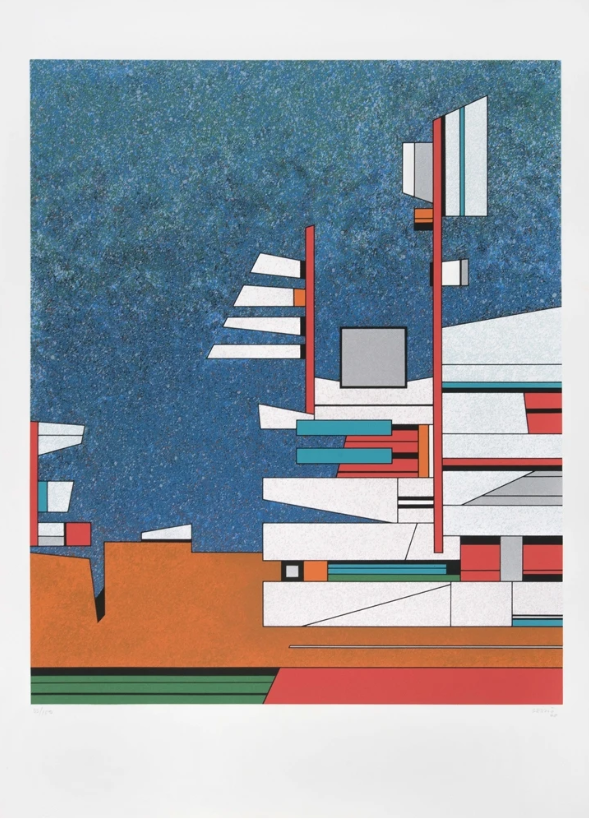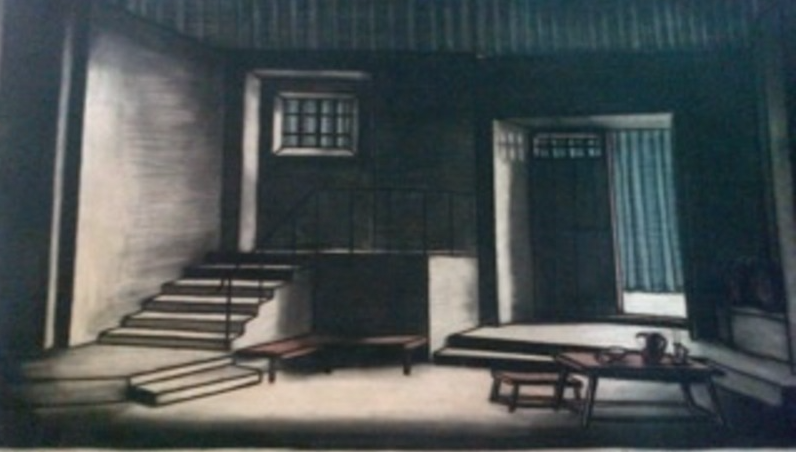

Gunther Gerzso (June 17, 1915 – April 21, 2000) was a Mexican painter, designer and director and screenwriter for film and theatre.
Gerzso was born in Mexico City during the Mexican Revolution. His parents were Oscar Gerzso a Hungarian immigrant, and Dore Wendland, German by birth. After his father’s death, a few months after Gunther was born, his mother married a German jeweler. The economic crisis during the revolution caused the family to flee to Europe in 1922. The family returned to Mexico two years later and his mother divorced. Not being able to provide for the children, she sent Gunther to Lugano, Switzerland to live with his uncle, Dr. Hans Wendland, who was an influential name in the art world. Gunther, then a teenager, met Paul Klee and lived among his uncle’s collection of paintings which included works by Pierre Bonnard, Rembrandt, Paul Cezanne, Eugene Delacroix and Titian. During his time in Lugano, he also met Nando Tamberlani, noted set designer, who would introduce him to the world of theater.

Gerzso returned to Mexico in 1931 and worked in set design. During the 1940s and ’50s he made various set designs for Mexican, French and American films. He won a total of five Premios Ariel (the Mexican Equivalent of the Oscars) for Best Production Design, as well as two more honorary Ariel Awards, in 1994 and 2000. During this time, he collaborated with directors like Emilio Fernandez, Luis Bunuel and John Huston (“Under The Volcano,” 1984).
According to Octavio Paz, Gunther Gerzso was one of the greatest Latin American painters, since it was he, along with Carlos Merida and Rufino Tamayo, who opposed the ideologist aesthetic movement into which muralism had degenerated.
Gunther Gerzso was awarded the Guggenheim in 1973. and later in 1978 he was the recipient of the Premio Nacional de Bellas Artes.
Gunther Gerzso – La Casa de la pantalla Tataniuh Serigrafia / de seda
Gunther Gerzso (junio 17, 1915 a abril 21, 2000) fue un pintor Mexicano, diseñador y director y guionista de cine y de teatro.
Gerzso nació en la ciudad de México durante la Revolución Mexicana. Sus padres eran Oscar Gerzso, un inmigrante húngaro, y Dore Wendland, alemana de nacimiento. El padre de Gunther murió unos meses después del nacimiento de Gunther y mas tarde su madre se casó con un joyero alemán. La crisis económica durante la revolución causó la huida de la familia a Europa en 1922. La familia regresó a México dos años después y su madre se divorció. Como no pudo sostener a los niños ella envió Gunther a Lugano, Suiza, para vivir con su tío, el Dr. Hans Wendland, que era un nombre influyente en el mundo del arte. Gunther, entonces un adolescente, conoció a Paul Klee y vivió entre la colección de su tío de pinturas que incluía obras de Pierre Bonnard, Rembrandt, Paul Cézanne, Eugene Delacroix y Tiziano. Durante su tiempo en Lugano, también conoció a Nando Tamberlani, famoso escenógrafo, que lo introduciría al mundo del teatro.
Gerzso regresó a México en 1931 y trabajó en el diseño escenográfico. Durante los años 1940 y ’50 hizo varias escenografías para películas americanas, mexicanas y francesas. Ganó un total de cinco Premios Ariel (el equivalente mexicano de los Oscar) y el Mejor Diseño de Producción , así como otros dos Premios a la trayectoria de Ariel en 1994 y 2000. Durante este tiempo colaboró con directores como Emilio Fernández, Luis Buñuel y John Huston ( Bajo El Volcán 1984).
De acuerdo con Octavio Paz, Gunther Gerzso fue uno de los pintores más grandes de América Latina, ya que fue él, junto con Carlos Mérida y Rufino Tamayo, que se oponían al movimiento estético ideólogo en la cual el muralismo había degenerado.
Gunther Gerzso fue galardonado con el Guggenheim en 1973 y más tarde en 1978 fue el destinatario del Premio Nacional de Bellas Artes.
